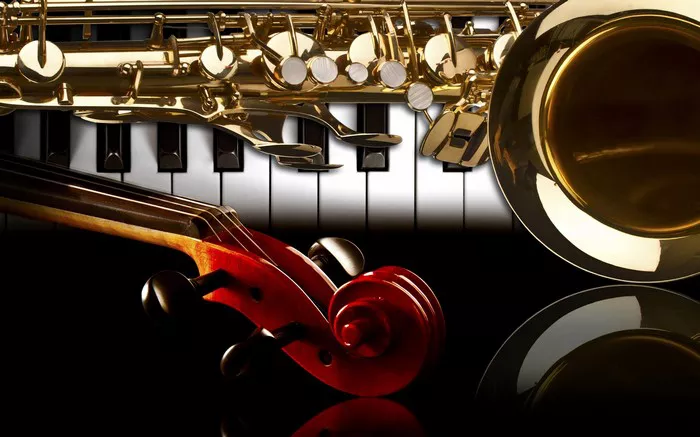Light classical music, often referred to as “light music” or “salon music,” is a genre that blends classical traditions with an accessible and melodic style. This genre has enchanted audiences for centuries, offering a more relaxed and entertaining alternative to the more intense and complex classical compositions. In this article, we will explore the origins, characteristics, notable composers, and enduring appeal of light classical music.
I. Origins of Light Classical Music
1. Historical Background
Light classical music emerged in the late 19th and early 20th centuries. It was a period of great cultural and technological change. The Industrial Revolution brought new social dynamics. People sought entertainment that was both sophisticated and accessible.
2. Influences and Development
The genre draws from various musical traditions. It incorporates elements of classical, folk, and popular music. Composers aimed to create pieces that were elegant yet easy to listen to. This approach made the music popular among a broad audience.
3. Venues and Performances
Light classical music was often performed in salons, cafes, and small concert halls. These intimate settings allowed for a closer connection between musicians and their audience. It was also a staple of radio broadcasts and early recordings. This expanded its reach even further.
II. Characteristics of Light Classical Music
1. Melodic Simplicity
The melodies in light classical music are straightforward and memorable. They are designed to be pleasing and instantly recognizable. This contrasts with the more intricate and complex structures found in traditional classical music.
2. Rhythmic Regularity
Rhythms in light classical music are usually regular and predictable. This makes the music easy to follow and enjoy. The steady beats often invite listeners to tap their feet or even dance.
3. Harmonious Arrangements
Harmonies in light classical music are rich and warm. They create a sense of comfort and pleasure. Composers often used lush string arrangements and gentle woodwind passages to achieve this effect.
4. Popular Forms and Genres
Light classical music includes various forms and genres. Some of the most popular are waltzes, marches, serenades, and operettas. Each form has its own distinct charm and appeal.
III. Notable Composers of Light Classical Music
1. Johann Strauss II
Johann Strauss II, known as the “Waltz King,” is one of the most famous composers of light classical music. His waltzes, such as “The Blue Danube” and “Tales from the Vienna Woods,” are beloved worldwide. Strauss’s music is celebrated for its elegance and joyful spirit.
2. Franz von Suppé
Franz von Suppé was an Austrian composer known for his operettas and light orchestral works. His overtures, like “Light Cavalry” and “Poet and Peasant,” are still performed today. Suppé’s music is characterized by its lively rhythms and catchy melodies.
3. Emile Waldteufel
Emile Waldteufel was a French composer who specialized in dance music. His waltzes, such as “The Skaters’ Waltz,” are delightful and enchanting. Waldteufel’s works are known for their graceful melodies and sparkling orchestrations.
4. Leroy Anderson
Leroy Anderson was an American composer famous for his light orchestral pieces. Works like “Sleigh Ride” and “The Typewriter” showcase his talent for blending classical elements with modern sounds. Anderson’s music is playful and imaginative, making it a favorite among audiences of all ages.
IV. The Appeal of Light Classical Music
1. Accessibility
One of the key reasons for the enduring appeal of light classical music is its accessibility. The music is easy to understand and enjoy. It doesn’t require extensive knowledge of classical music theory or history. This makes it ideal for casual listening.
2. Emotional Connection
Light classical music often evokes strong emotions. Its melodies can be uplifting, nostalgic, or soothing. This emotional connection resonates with listeners, creating a lasting impression.
3. Versatility
Light classical music is versatile and adaptable. It can be performed by soloists, small ensembles, or full orchestras. This flexibility allows it to fit various settings and occasions, from formal concerts to background music at social events.
4. Cultural Significance
Light classical music has a significant cultural impact. It reflects the social and artistic trends of its time. Composers often drew inspiration from their surroundings, creating music that resonated with contemporary audiences. This historical context adds depth to the listening experience.
V. Light Classical Music in Modern Times
1. Continued Popularity
Despite the evolution of musical tastes, light classical music remains popular. It is frequently performed by orchestras and ensembles worldwide. Many pieces have become staples of the classical repertoire.
2. Media and Entertainment
Light classical music is often used in media and entertainment. Its catchy melodies and pleasant harmonies make it suitable for films, television shows, and commercials. This exposure helps introduce the genre to new generations of listeners.
3. Educational Value
Light classical music is valuable in education. It serves as an introduction to classical music for young students. Its simplicity and charm make it an effective tool for teaching basic musical concepts and appreciation.
4. Preservation and Innovation
Efforts to preserve and innovate within the genre continue. Modern composers and arrangers explore new ways to present light classical music. They experiment with different instruments and styles, ensuring the genre remains vibrant and relevant.
See Also: A Deep Dive into the Era of Classic Music: All You Want to Know
VI. Conclusion
Light classical music is a delightful and enduring genre. Its melodic simplicity, rhythmic regularity, and harmonious arrangements make it accessible and enjoyable for a wide audience. The contributions of notable composers like Johann Strauss II, Franz von Suppé, Emile Waldteufel, and Leroy Anderson have left a lasting legacy. This music continues to enchant listeners with its charm and elegance.
In modern times, light classical music maintains its popularity. It finds new life in media, education, and innovative performances. As we celebrate this genre, we appreciate its ability to bring joy and beauty into our lives. Light classical music is a testament to the timeless appeal of melody and harmony. It remains a treasured part of our musical heritage.

